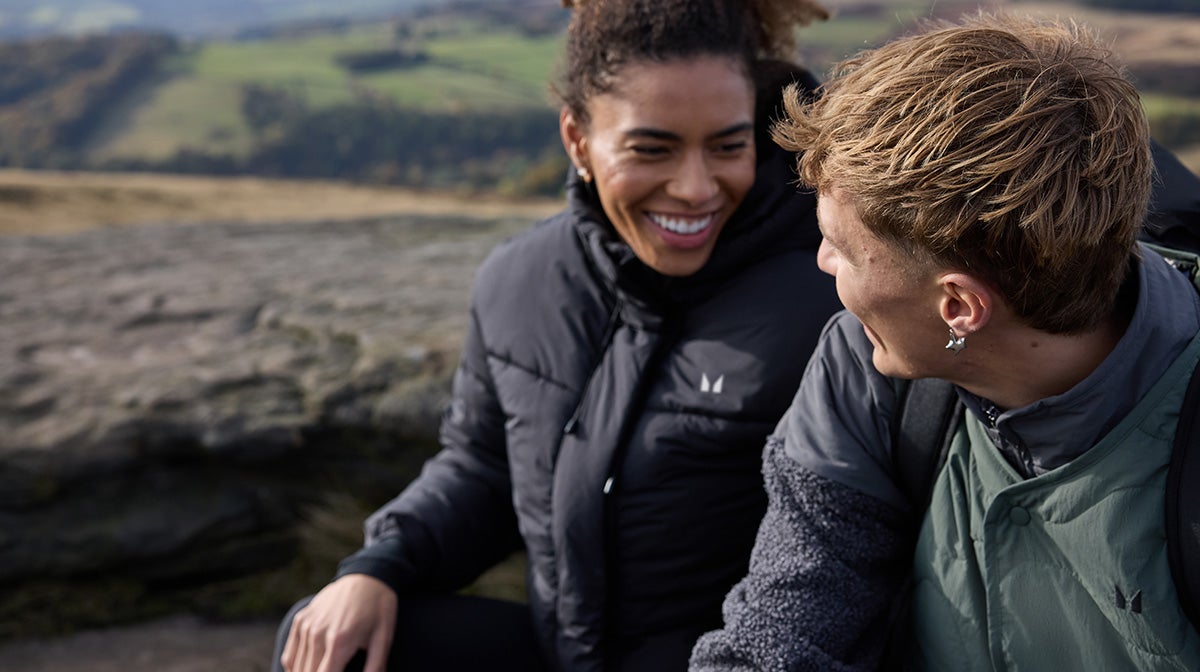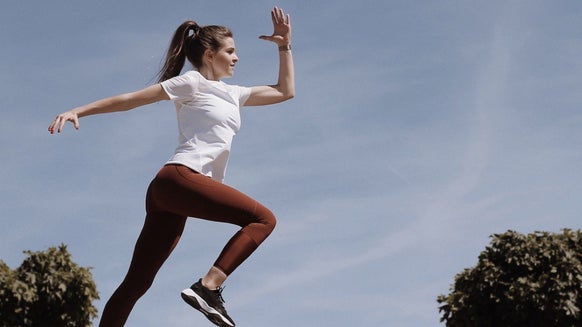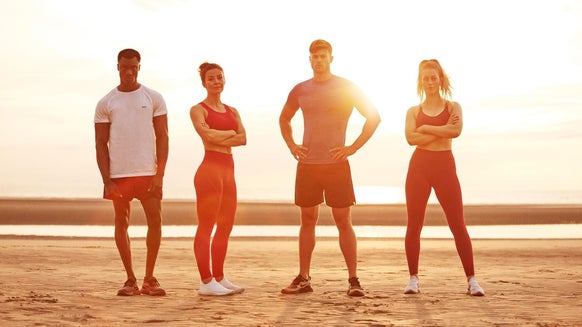Sports meditation: Can it make a difference to your performance?

Meditation is incredibly rewarding as a wellness tool. There’s a little more to it than ‘just doing nothing’. It takes time, patience, and practice, but with a little bit of dedication, each day you’ll build momentum and start to wonder how you ever lived without it.
- What is Meditation?
- Understanding Meditation and Its Benefits
- What is Guided Meditation?
- Choosing the Right Guided Meditation for Your Needs
- The Science Behind Meditation and Athletic Performance
- Key Benefits for Athletes: Focus, Recovery, and Resilience
- Mindfulness Meditation
- Creating a Meditation Routine
- Best Times to Meditate: Pre-Workout, Post-Workout, and Rest Days
- The Role of Breathing in Meditation
- Using Meditation to Manage Stress and Avoid Burnout
- Balancing Training Intensity with Mental Well-Being
- Tools and Resources for Guided Meditation
- Synergy with Yoga, Stretching, and Massage
- Common Challenges and How to Overcome Them
- Tracking Your Progress and Measuring Benefits
What is Meditation?
In simple terms, meditation is about training your mind and body in awareness.
This practice focuses on becoming solely present and enables you to detach from ‘discursive thinking’, which is basically scattered thinking that leads to frequent distraction.
Instead, your attention is placed on the here and now, removing any judgement from yourself, or the meditative practice itself.
Throughout this process, the body and mind become calmer, and it often brings a sense of clarity to your current state of being.
Understanding Meditation and its Benefits
Meditation can support the well-being of everyone.
It calms our nervous system, explaining why people use meditative practices to combat feelings of anxiety, depression, and chronic pain.
For some, it really is a form of medication, while for others, it is used simply as a helpful way to ‘switch off’ from the pressures and demands life brings.
The benefits also transfer across into physical achievements. It has been shown through research to have the potential to boost performance, whether this is in the gym or at work.
What is Guided Meditation?
Meditation can be guided, meaning it is led by a teacher or person. This individual takes you through the process of meditation in a simple, comforting step-by-step process.
Getting started with guided meditation
Whether it’s in person or a recording, having another person guide you through a meditation practice can be very helpful.
When guided, you follow their voice, instructions, and use their words to help you with visualization.
Getting started as a novice
Now you know the benefits, what’s stopping you from giving meditation a go?
Contrary to what images suggest, meditation doesn’t have to involve you sitting cross legged for hours.
The practice doesn’t even have to be longer than a few minutes. All that is required is intentional action.
Choosing the Right Guided Meditation for Your Needs
While the underlying principle of meditation is to bring about more awareness to the mind and body, the practice itself can take a variety of approaches.
The aim is to find a method that works for YOU and provides you with space and time to activate your parasympathetic system.
The Science Behind Meditation and Athletic Performance
High level sports performances require an athlete’s physiological, psychological, and interpersonal capacities and readiness to be in harmony.
This can only occur when there is calmness, clarity, and communication between all the bodily functions.
As this harmony can be found during mindfulness and visualization, it can support the athlete as they flexibly regulate and control their own mind and behavior.
If this process can occur, the aim of achieving their set goal is much more likely.
Key Benefits for Athletes: Focus, Recovery, and Resilience
The use of meditation for athletes can enable them to drop into their ‘flow state’.
This term is used to describe the feeling of becoming so immersed in ‘the flow of being’ that the task at hand requires no conscious thought.
Often in this zone, the concept of time is no longer a factor and instead the action is simply carried out.
This occurs when the body and mind feel relaxed enough to simply perform how they ‘should’, drawing upon their efforts and practice leading up to this point. For example, a gymnast performing their Olympic routine will no longer need to consciously think about what move is next.
They have their routine engrained in their mind and therefore all they must do is find a ‘flow’ that occurs much more easily when they are relaxed. This is why meditation prior to a big event may be helpful.
A good example of this is Olympic gold medalist in pole vault, Yelena Isinbayeva, who has been known to lay with a towel over her head between jumps as a way of helping her focus.
Mindfulness Meditation
Meditation focuses on the mind-body connection. Allowing us to notice how we feel at a deeper level, physically, mentally, and emotionally.
A mindful body scan is one of the most popular and powerful guided meditations that brings awareness and a sense of calm to your body and mind.
During this practice, you spend time noticing how different parts of your body feel. For example, when lying down, you may notice the heaviness of your head or the coldness of the floor against your fingertips.
It brings us into the present moment and allows us to be reminded that safety and peace can be experienced when we pause.
Visualization and mental rehearsal
The use of visualization, through meditation particularly, has been proven to help many successful people reach their goals.
A large percentage of athletes and successful entrepreneurs have recognized this growing trend and have used visualization to support them in their efforts to gain that extra 1% needed to find success.
During the 2024 Olympics, many athletes expressed during interviews that they used visualization techniques, along with self-talk to help them succeed.
Gaby Thomas, Olympic gold medalist, was one of many who talked about her ability to visualize and focus on the moment where she wins gold, prior to her actually doing it. She was able to see, feel, and hear the outcome using the art of mindful visualization.
Research has shown that our brain often cannot tell the difference between perception and reality.
So, whether you believe it changes our brains or is just a ‘placebo’, it won’t hurt to try.
Progressive muscle relaxation
Another technique used during meditation to relax the mind and body is ‘progressive muscle relaxation’.
During this practice, the participant progressively tightens and relaxes different muscles groups. They spend time recognizing what tension feels like and where it is held most in their body.
This can really help people understand how stress is physically manifesting in their body.
Creating a Meditation Routine
An effective meditation routine is a routine that fits into your schedule and doesn’t add more stress to an already busy life (after all, that would kind of defeat the point). So for this reason, less is more and consistency trumps intensity.
Starting small: short sessions to build consistency
As a novice, taking five minutes out of your day will likely be long enough. As the saying goes, ‘don’t try to run before you can walk’. Start small – don’t overwhelm yourself.
Simply turning your attention to a guided practice, in a calming environment, will likely be much easier (and probably enjoyable).
Setting up your meditation space
Not only is the person leading the practice important, but the environment in which the practice occurs must also allow you to feel comfortable, relaxed, and free to be vulnerable.
This is why a comfortable surface and quiet atmosphere is best for meditation.

Master Meditation: Advice from A Mindfulness Coach
It's time to take 5 and try this....
Best Times to Meditate: Pre-Workout, Post-Workout, and Rest Days
There is no ‘best time’ to meditate, it’s dependent on your goals, schedule, and needs.
The main factor that will affect how meditation impacts your mind and body is the consistency of the practice.
Meditation for post-workout recovery
A guided meditation or breath work can help you to calm down after a session, or before bed. Figuring out what works best for you is important.
Doing the wrong type of meditation to support your needs will ultimately reduce the benefit of the session for you and your body.
For example, if your aim is to try some visualization, ensure you have a goal or feeling you’d like to focus on.
This technique only works if you have a strong desire to make this idea a reality. If you are just looking to feel a little calmer, maybe opt for a ‘body scan meditation’ instead.
Enhancing physical recovery through relaxation
While meditation is only one of the many effective ways athletes can support their performance, it’s clear that there can be several benefits found in aiding focus, recovery, and resilience.
This can be transferred outside of the sporting environment too and implemented by us all.
The Role of Breathing in Meditation
Breath work can be an extremely useful focus during meditative practices as it has been shown to engage our parasympathetic nervous system, enabling ‘rest and digest’ to occur.
This is key to living a healthier and happier life. While there are many different cycles that can be used during breath work, the main reasoning remains the same.
Breath Control Techniques for Focus and Calm
A few of the most popular techniques that incorporate breathing into meditation include:
Belly breathing
A practice that focuses on moving away from the ‘shallow’ breathing we do every day. Instead, your attention is placed on the rise and fall of the belly. When engaging your diaphragm, your lower abdomen will be filling and emptying.
Often this technique starts with you placing your hand on your belly and practice pushing it in and out.
Box breathing
- Either in your mind or on a page, visualize a box.
- As you imagine your fingers tracing the sides of the box (or when physically doing it), take four seconds to trace each side of the box.
- As your finger traces the first side, inhale. As your finger traces the second side, hold your breath for four seconds.
- As your finger traces the third side, exhale for four seconds.
- As your finger traces the fourth side, sit with your empty lungs for four seconds.
- Repeat this cycle 4-5 times.
Breathing cycles
This focuses on using different counting techniques to inhale and exhale. The aim is to allow your mind and body to synchronize.
For example, inhale for four seconds, hold your breath for seven seconds, exhale for eight seconds. The repetition of this will ensure deep breathing is occurring.

Relaxation Techniques & Exercises
relaxation is no longer a luxury — it’s a necessity......
Using Meditation to Manage Stress and Avoid Burnout
Burnout often occurs when we spend too much time with our sympathetic nervous system switched on (fight, flight, or freeze responses are our ‘go to’).
This is why activating our parasympathetic nervous system through breathing techniques and meditation can subsequently prevent burnout.
Identifying stressors and mindful coping strategies
Once your body feels more relaxed and regulated, it can become easier to use higher executive thinking skills to rationally decide what needs to change to be happier, healthier, and less stressed.
Balancing Training Intensity with Mental Well-Being
Often the biggest factor affecting our ability to cope with the stresses of life is the lack of balance we have.
The expectations and commitments we try to live up to can be extremely unrealistic and overwhelming.
During these meditative practices, in a relaxed state, we can become clearer on what our priorities should be and what needs re-examination.
Tools and Resources for Guided Meditation
There are an abundance of tools and resources out there that can support you on your meditation journey.
By exploring several different approaches, you can decide what works best for you.
Finding a meditation coach or class
Often the practice of meditation can be much easier when there is a place and person who facilitates the activity.
For this reason, seeking out a professional who provides sessions on either a 1-1 basis or within a group may allow you to engage in the practice with less resistance.
Combining meditation with other recovery practices
There is no one ‘secret ingredient’ that will ensure your well-being and performance is at peak level.
It is the combination of all the small actions that accumulate to create desirable results.
Meditation can support recovery as it manages the stress in our bodies, however, it should be performed alongside other recovery protocols including sufficient sleep, nutrition (specifically protein), and rest.
Integrating meditation with physical recovery routines
Meditation can be an enjoyable way to end a training session as it brings the body’s heart rate down and allows the individual to feel a sense of calm.
Synergy with Yoga, Stretching, and Massage
There is synergy to be found between meditation and other activities too such as yoga, stretching, and massage. They all bring us into the present moment and work off our senses. This is often why healing and stress relief occur during these activities.
Common Challenges and How to Overcome Them
Staying consistent and motivated
Attempting meditation once every 4 weeks is not going to allow your mind and body to begin developing the skill of meditation.
Just like everything else, it requires effort, time, and patience. Why not begin by setting aside 10 minutes, 3 times a week?
Aim to try some form of meditation in the morning before you do anything else.
Dealing with distractions and restlessness
Phones and other digital devices have no use during meditative practices so remove them from your surroundings.
Dogs, cats, and other animals also won’t keep you grounded in the present moment. Aim to make your environment as quiet as possible.
Tracking Your Progress and Measuring Benefits
Journaling and self-reflection
While it is hard to gauge whether meditation is positively impacting your daily life, using a journal may be a helpful tool to spot any changes in your mind and mood.
Prior to meditating, why not ask yourself a couple of simple questions?
For example, ‘How do I feel right now in three words?’ & ‘Out of ten how anxious am I?’
Once you have practiced your meditation, ask yourself the same questions and see if there is any difference in your answers.
Sometimes there will be no difference, but if you can see some benefit, then maybe that is your sign that meditation has a place in your routine.
Take Home Message
Nothing worth doing is ever easy. But implementing healthy habits into your routine in a slow, steady, and manageable way is how real change and benefit comes about. Meditation is no different. Take time to explore your options with meditation.
Figure out what doesn’t feel good and what does allow you to drop into a relaxed state. It’s a unique and interesting method that really can be enjoyable for everyone when you find YOUR way.
If you have any further questions on meditation, please reach out – find me on Instagram
FIND MORE HERE:

10 Signs Of Overtraining & How To Recover From It
You can have too much of a good thing......

How Do I Sleep Better? | Tips to Sleep Better
Quality sleep is fundamental for health and well-being......

Master Habit Stacking With 5 Simple Steps
A proven method for improving your daily routine....

https://www.nccih.nih.gov/health/meditation-and-mindfulness-effectiveness-and-safety








